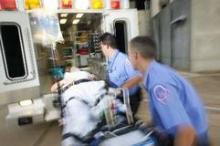The use of nonsteroidal anti-inflammatory drugs before hospital admission for severe blunt injury is associated with a reduced incidence of trauma-induced coagulopathy, results from a secondary analysis of a prospective cohort study demonstrated.
"Although trauma-induced coagulopathy [TIC] has been increasingly recognized as a critical component of the pathophysiology of trauma and hemorrhagic shock, factors that predict the development of TIC remain largely unexplored," researchers led by Dr. Matthew D. Neal wrote in a study published in Annals of Surgery.
"The lack of ability to predict TIC makes the design of therapeutic interventions challenging, especially considering that TIC seems to develop rapidly and early after injury."
They noted that previous studies from the trauma literature "have linked the development of TIC to alterations in the thrombomodulin protein C pathway and excessive activated protein C activation, resulting in impaired coagulation. These data present a potential link between TIC and inflammation, which is a common finding in other conditions where both sterile (such as myocardial infarction) and pathogen-mediated (sepsis) diseases present with coagulopathy."
In an effort to investigate whether the use of prehospital NSAIDs may lead to a reduced incidence of TIC, the researchers performed a secondary analysis of 1,897 subjects in the Inflammation and the Host Response to Injury program, which is a large-scale, multicenter study of adults who present with hemorrhagic shock after blunt injury and is designed to characterize the genomic and proteomic response after injury. The key outcome of interest was TIC, which was defined as an admission international normalized ratio (INR) of more than 1.5, or clinically significant coagulopathy, which was defined as that which required transfusion of more than 2 units of fresh frozen plasma or more than 1 pack of platelets in the first 6 hours after admission to the trauma center.
Dr. Neal, of the division of general surgery in the department of surgery at the University of Pittsburgh Medical Center, and his associates used logistic regression to evaluate the association between TIC and prehospital medications and comorbidities (Ann. Surg. 2014;260:378-82). A total of 15 medications or medication classes were assessed, including NSAIDs, aspirin, beta-blockers, antihypertensive medications, oral contraceptives, and corticosteroids.

